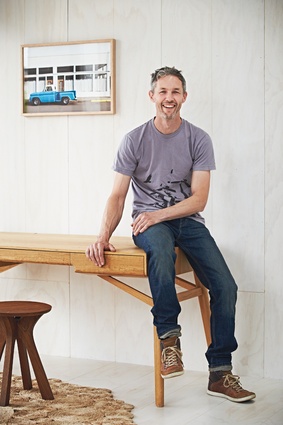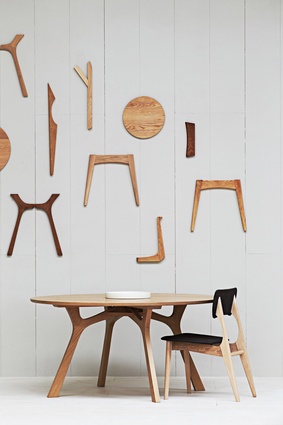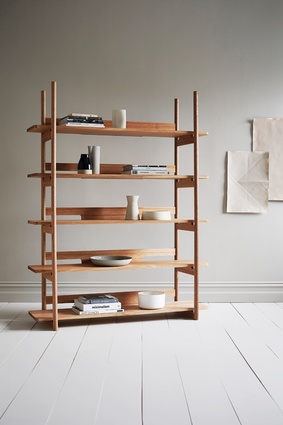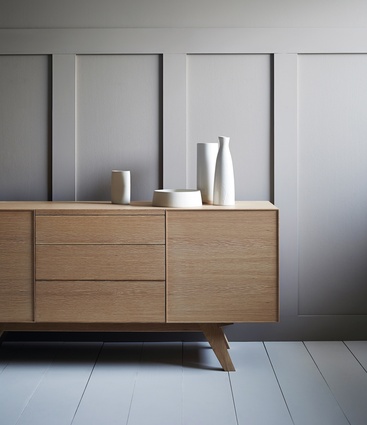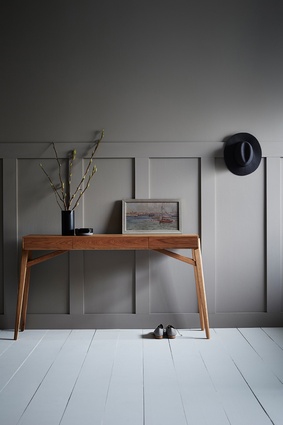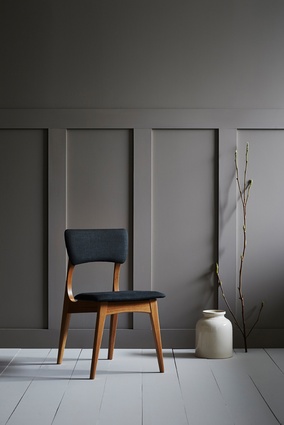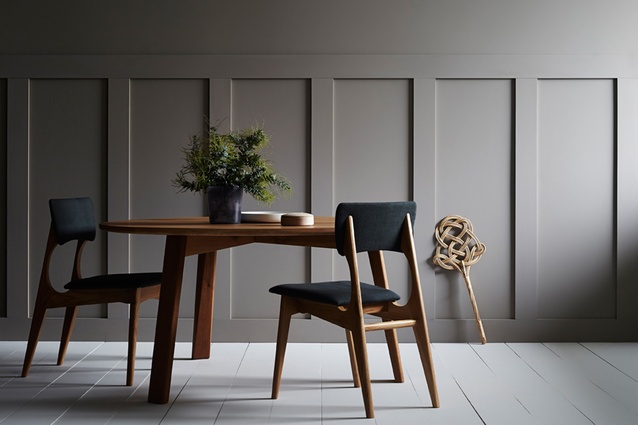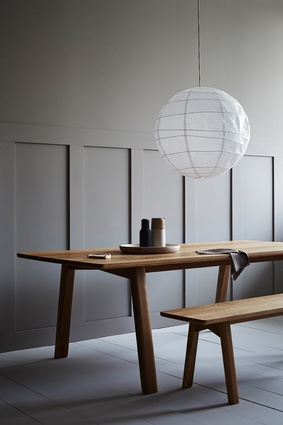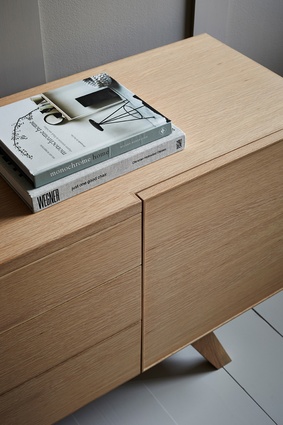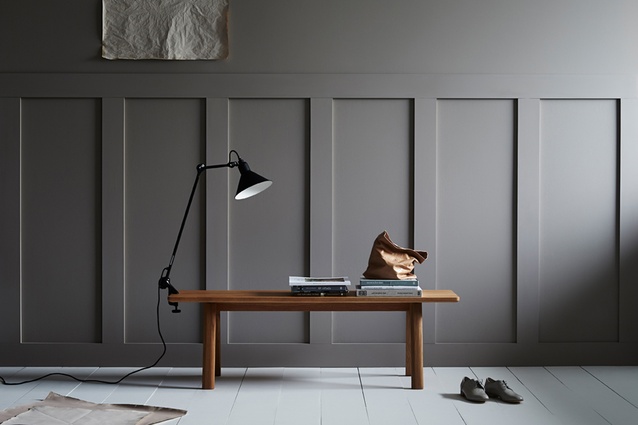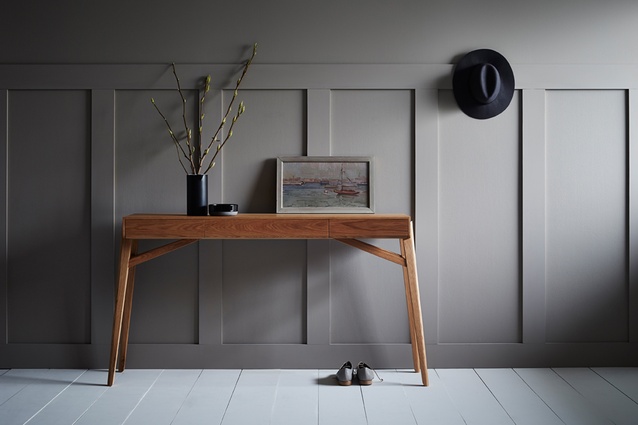A tidal change
A decade after leaving the corporate world, George Harper now spends his days immersed in the hands-on creative process. Urbis caught up with the ex-pat Kiwi at his Tide Design workshop in Melbourne.
Urbis: What took you to the other side of the Tasman?
George Harper: I spent a few years in England in the mid-late 90s and Melbourne was an extension of that ‘overseas experience’. I never quite made it back to New Zealand.
Urbis: What are your favourite timbers?
GH: American oak for its strength, pronounced grain, colour and suitability for staining. Tasmanian oak because it’s nice to have a local timber in the mix and the lineal straight grain really suits some pieces such as our new Tana Shelf. American walnut because it is such a classic.
Urbis: Who is the target audience for your designs?
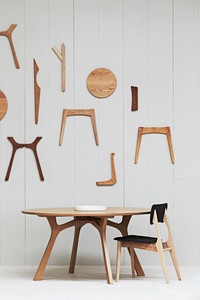
GH: We’ll always be a niche brand, however I think our furniture does have a broad appeal because we strive to make beautiful furniture without being too focused on trends and fads. Our furniture will resonate with anyone who values furniture that is carefully considered in both design and execution.
Urbis: What has been the most challenging, or unusual, made-to-order request so far?
GH: We had a customer who had earlier bought one of our Lyssna round dining tables and decided they would like to turn it into an extension table. After some consideration we came up with a suitable plan and the outcome was a successful extension table housing what looked liked medieval timber engineering!
Urbis: What do you consider indispensable when it comes to the people you work with?
GH: I’m stating the obvious here, but what connects our staff is the innate desire to make solid timber furniture. There’s just something about working with timber and transforming it from a raw material into a beautiful object that they all enjoy, as well as the continual refinement and development of their skills. Apart from that, an open mind and enthusiasm.
Urbis: Is there much collaboration during the process?
GH: A lot of the design ideas are swimming around in my head with some rough sketches along the way. It can take a couple of months before these are properly drawn up and at that stage my partner Pia will have some input on the concept and I really value her judgment (usually!). It’s when we make up the full-scale prototype that other staff help nut out some of the finer details, and the best method of construction.
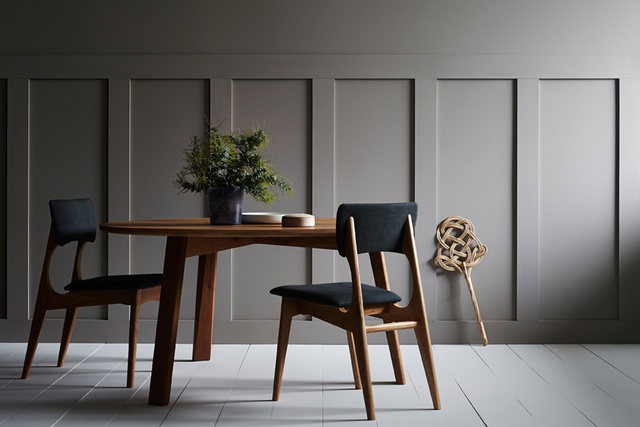
Urbis: What helps spark your creativity?
GH: There seems to be a burgeoning small-scale, high-end design/making/crafting industry. From ceramics, to furniture, to textiles, even handcrafted timber coffee machine components! This is maybe a reaction to the proliferation of mass market, short-lifespan products and to be part of something of that is really satisfying and drives our creativity.
Urbis: Do you have a ‘great un-built work’ in your mind? Is there something you’d love to make, if only someone would ask for it?
GH: Yes – the great un-built is in my mind and will be for the next couple of months. It’s a purpose-built extension table that is not compromised in terms of aesthetics and usability, as these types of tables so often are. There are a lot of details and components to be worked out but I’m working on that, and I hope to be able to unleash this on the world some time soon.
Urbis: What’s your own living space like?
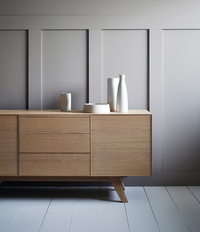
GH: There is plenty of my furniture in the house – right back to a couple of the original (and pretty terrible!) bits and pieces smashed out in the back shed. Our furniture is there mainly because of necessity, as raising a young family and growing a business has meant either I make the furniture or it’s going to be second-hand Ikea!
Urbis: How have your designs changed since you left your desk job?
GH: Nearly 10 years since I left my job in dispute resolution, and my designs have definitely evolved. In the early days there is a desire to try to impress people with complexity. But as I have gained confidence and our design language has become clearer, I’ve pulled back a bit on complexity and tried more simple and subtle forms, but without losing any of the character.
Urbis: If you had to pick one iconic chair as the best ever made, which one would it be and why?
GH: I know it’s a bit predictable but I’d have to say the Wegner Round Chair – the original, not the replica! On a purely technical level, I still don’t understand how they made those chairs in large quantities in that era. In terms of design, it embodies so much of what inspires me – simplicity belying complexity, subtle organic forms, quality, accessibility and functionality. These are all elements that I try to bring to every piece of furniture we produce.

